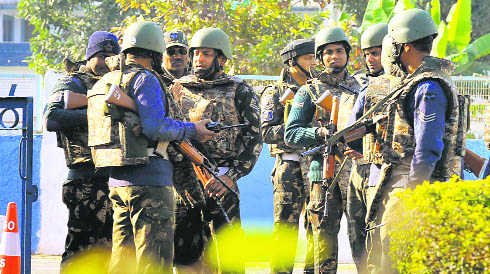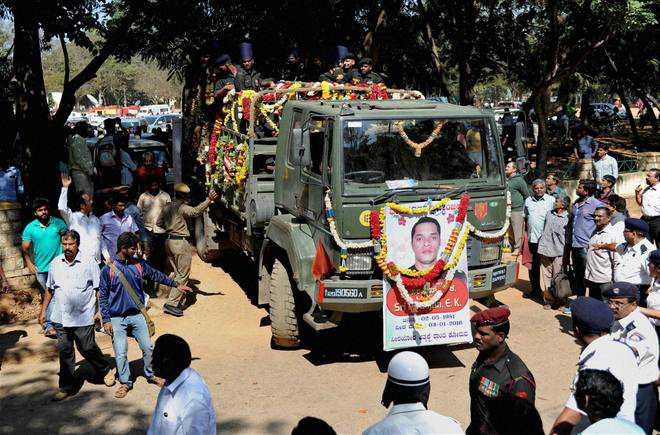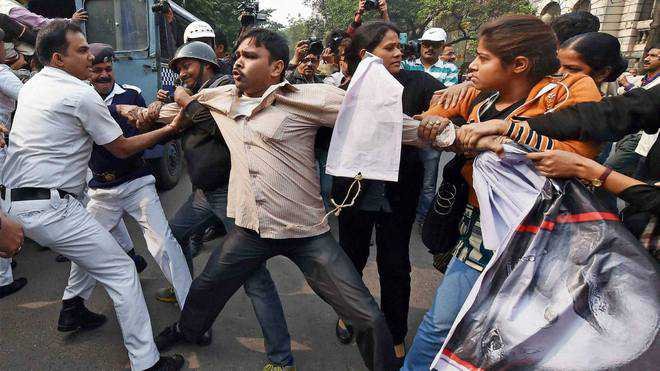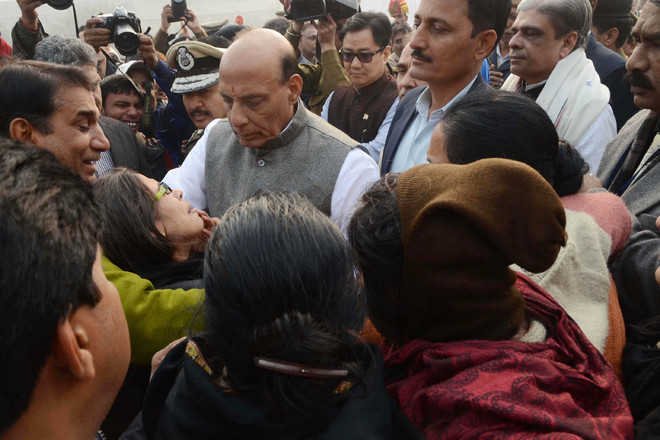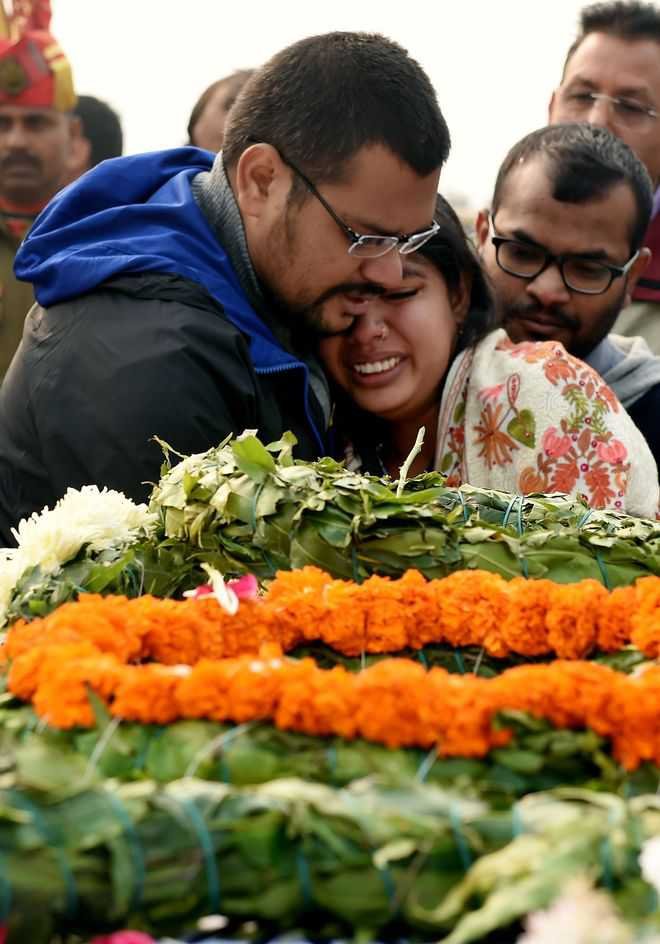
The Pathankot attack is not a spontaneous response to recent developments; it is a manifestation of Pakistan’s national security strategy to pursue its revisionist agenda against India, says C Christine Fair, author of Fighting to the End: The Pakistan Army’s Way of War, and an associate professor in the Peace and Security Studies Programme at Georgetown University’s Edmund A Walsh School of Foreign Service. Fair, who earlier served as a political officer to the UN Assistance Mission to Afghanistan in Kabul, tells Bhaswar Kumar in a telephonic interview that there is a consensus within the Indian security establishment that India lacks the offensive capability to defeat Pakistan in a short war.
The January 2 attack on an Indian Air Force base in Pathankot was allegedly carried out by Jaish-e-Mohammed (JeM) operatives. What are the dynamics between organisations like JeM and Pakistan’s military and civilian establishments?
Pakistan’s Inter-Services Intelligence (ISI) set up JeM as a competitor to the Lashkar-e-Taiba (LeT), which the ISI had formed earlier. Before the formation of JeM, three Pakistani terrorists – Mushtaq Ahmed Zargar, Ahmed Omar Saeed Sheikh and Maulana Masood Azhar – were released by Indian authorities in return for hostages taken during the hijacking of the Indian Airlines flight IC-814 in December 1999. Azhar and the two other terrorists, upon their release in Kandahar, were ferried to Pakistan under ISI escort. Within a few weeks, Azhar announced the formation of JeM in Karachi.
LeT and JeM are ideologically distinct organisations. JeM, like the Afghan and Pakistani Taliban, is Deobandi; LeT is Ahle Hadees. Besides, JeM generally conducts suicide attacks, while LeT conducts high-risk missions where the goal is not to die but its operatives would still rather die than be taken captives.
These terrorist groups have an army major assigned to them. It is the majors’ responsibility to ensure the groups’ operatives are trained and they get the required resources. A major can, for example, authorise a small-level attack in Kashmir against an Indian army unit — an offensive that does not have major strategic implications. On the other hand, every attack outside of Kashmir has to have the army chief’s imprimatur, given the likely strategic implications — after all, if the Americans get upset and hold up coalition support funding, it is the army chief who will have to answer.
The Pathankot attack came within a week of Indian Prime Minister Narendra Modi’s visit to Lahore and the resumption of talks with Pakistan. Have the terrorists and their handlers achieved their goal by creating a hurdle for the peace process?
If the attack is seen as an attempt to derail the nascent peace process between the two countries, it might be a misreading of the way in which Pakistan employs its jihadi assets to secure its strategic interests in the region. The attack on the air base is not a spontaneous response to recent developments. It is simply the latest manifestation of the Pakistani national security strategy to pursue its revisionist agenda against India.
Pakistan has called PM Modi’s bluff. Despite all the rhetoric, there is a consensus within the Indian security establishment – at least among those who draw their conclusions from data instead of speaking from nationalist sentiment – that India lacks the offensive capability to defeat Pakistan in a short war. That is important because there will only be a short war between India and Pakistan, due to the presence of nuclear weapons on both sides, if the former responds to such a provocation.
They did it at Gurdaspur, too. The Gurdaspur attack was not in response to the meeting between Modi and Sharif in Ufa. The timing of the Gurdaspur attack is important; it occurred after the reported Indian raid in Myanmar against militants. You will remember the statements issued after the Myanmar raid, warning that all other neighbours of India harbouring terrorists would receive the same treatment. You will also remember the Pakistani response to these statements. Gurdaspur was really about calling the Indian government out on its statements and bravado after the Myanmar incident.
Both these attacks – Pathankot and Gurdaspur – were conducted in and around tier-III cities or small towns. Unlike an attack on a city like Mumbai or Delhi, which will cause a massive uproar and have a galvanising impact on the populace – the Parliament attack, for instance – these were carefully calibrated probes to continue to test India’s red lines. We need to see this in tandem with the attack on the Indian consulate in Mazar-e-Sharif. Pakistan has been testing India’s red lines within Indian territory and in Afghanistan.
When you say Pakistan has called the government’s bluff, are you referring to Pakistan’s civilian government or its military establishment?
The civilians are irrelevant in this case. This is all coming from the army. There is no “rogue” ISI, either. The ISI reports to the Pakistani army chief.
Don’t you think that the recently revived dialogue process is the only way forward?
India should not be talking to Pakistan at all. Pakistan says it has a legitimate claim on Kashmir, which it does not. The Indian Independence Act of 1947 allowed the princely states to decide their fate. India possesses Kashmir’s instrument of accession. The case of Junagarh and Hyderabad complicates the morality of India’s actions, but that is a different issue.
Pakistan could have made a claim for Junagarh at the UN but it has no claim over Kashmir. Pakistan also did not fulfil the first condition required for a plebiscite under the UN Security Council resolution on Kashmir. Of course, the Shimla agreement obviates that in any event.
As India continues to talk to Pakistan on the issue of Kashmir, it emboldens the Pakistanis and legitimises their narrative domestically. It fosters the belief among Pakistanis that their claim is entertained by India. The Pakistani army gets to tell its people that even the Indians know that they need to talk to us.
If Pakistan wants peace, it could have it by accepting the LoC as the formal border and desisting from sending terrorists across the border. By the way, that would technically be a concession from the Indian side since it has an instrument of accession for the whole of Kashmir. India should be willing to talk only when Pakistan is willing to ratify the LoC as the border.
Every time one of these attacks occurs, the benefit that Pakistan gets is that the international community calls for talks between India and Pakistan for resolving outstanding issues. In other words, the international community imposes a false equivalence between Pakistan and India. If you cannot punish Pakistan for its support to terrorist organisations, at least you can deprive it of any benefit.
The international community will have to change its talking points. If the international community, instead of calling for talks, says Pakistan needs to act like a responsible nuclear power that does not conduct proxy warfare against its neighbours, and that the changing of maps by bloodshed is not acceptable, Pakistan will be deprived of any benefit from such attacks.
According to reports, Nawaz Sharif has called PM Modi and assured him of action against the persons responsible…
This is absolute dramebaazi. Sharif is an irrelevant actor in these matters.
Aside from military funding and support, consider the fact that Hafiz Saeed’s Jamat-ud-Dawa (JuD), the rechristened LeT, gets money from the budget of Pakistani Punjab’s government, which is run by Sharif’s party. The government said it would run JuD’s educational establishments, so JuD has a line item in every Punjab provincial government budget.
Besides, JeM enjoys political cover from the two factions of the Jamiat ul-e-Islami.
How can India build an effective deterrence against this form of sub-conventional warfare?
I do not see too many options that India has. It has not made the investments it needs to ensure deterrence against such acts by way of offensive superiority on its international border. India’s current conventional posture on the international border is of defensive competence instead of offensive superiority.
Defence modernisation for such deterrence requires reconfiguring your current military assets, which are bulky and easily detectable, into smaller units that can be forward-deployed much more rapidly without the intelligence footprint that Pakistan can easily detect.
It is about personnel policies. India does not need a huge standing army for such purposes as much as it needs special operators to conduct hot-pursuit missions into Pakistani territory without detection. Currently, India does not have a Chief of Defence Staff (CDS) or “jointness” among the different branches of its armed forces for seamless interoperability. Pakistan does not suffer from these shortcomings; it has “jointness” and it essentially has a CDS in the form of its army chief. Most disturbingly, Pakistan’s position has been significantly bolstered by American military largesse.
Lastly, but most importantly, there needs to be the political will to use these assets as and when required.
This is not a bad time to be an Indian. Successive governments have come to understand that if you remain focused on not having a large confrontation with Pakistan, India’s economy will continue to grow. But, you can have this attitude only if you are willing to suffer several casualties in attacks from Pakistan every year.
We have seen a resurgence of JeM in the recent past…
JeM had been defunct for years after it split in December of 2001. Its leadership was divided over whether they should turn their guns on Pakistan for aiding the Americans in bringing down the Taliban. Azhar said he would not turn against Pakistan even as members of his organisation revolted and went on to join Tehreek-e-Taliban Pakistan (TTP).
Azhar was kept in protective custody for years and allowed to grow his empire in Bhawalpur. The thinking of ISI was that as long as people were loyal to Azhar they would not turn their guns on Pakistan.
As part of its strategy to combat TTP, the Pakistani army contacted TTP commanders and gave them a choice to go back and fight in Afghanistan; this coincided with the elections in Afghanistan. The other important part of the strategy was that the Pakistani army revivified JeM to draw back the original defectors from JeM and redirect them to India.
In a piece I had written for India Today in September last year, I predicted the next attack would probably be conducted by JeM, instead of LeT. My colleagues at the UN who had been monitoring Al Qaida and the Taliban informed me a year ago that the JeM cadre was amassing at the LoC between India and Pakistan.
The move to revivify JeM is very much part of the Pakistani army’s domestic security strategy.
http://wap.business-standard.com/article/current-affairs/pathankot-attack-aimed-at-probing-modi-govt-s-red-lines-christine-fair-116010900252_1.html


